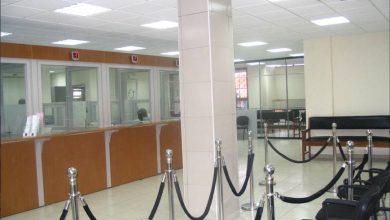Why I can’t wait for Malawian Airlines
In The Nation newspaper edition of August 14 2013, Economic Empowerment Action Group president Lewis Chiwalo cried foul over fares South African Airways (SAA) is charging passengers on the Malawi-Johannesburg route.
He described the fares as a rip off.
Further to this, Chiwalo said the high fares are contributing to the increased cost of doing business in Malawi, thereby negatively impacting on the country’s economic growth.
Following the grounding of Air Malawi, which has since been dissolved and paved the way for a new national carrier Malawian Airlines Limited, SAA has been the sole operator of the Malawi-Johannesburg route, landing and taking off from either Chileka Airport in Blantyre or Kamuzu International Airport in Lilongwe on alternate days.
For the record, Air Malawi’s last flight to Johannesburg was on February 13 2013.
This development left passengers travelling by air between Malawi and South Africa at the mercy of SAA. In some cases, some have been forced to taking the longer route, going to South Africa through Nairobi on Kenya Airways.
In the aviation industry, competition among airlines is one of the major factors in pricing air tickets.
Naturally, without meaningful competition, SAA has taken advantage of the situation to cash in, so to speak.
What I fail to understand, however, is why Malawians should be paying for a two-hour flight between either Blantyre or Lilongwe and Johannesburg fares equivalent to or higher than those on long-haul flights?
SAA is charging $745 (about K257 025 at the exchange rate of K345/dollar) for the Jo’burg to Nairobi, Kenya route and demanding $1 350 (about K465 750) for the Jo’burg to Blantyre leg.
On the other hand, a travel agent in Blantyre this week told me that flying on SAA from Malawi through Johannesburg to New York, returning within 30 days, would cost me about K489 147 (an equivalent to $1 417 at the exchange rate of K345/dollar). And to fly to London, one would pay about K383 065 (equivalent to $1 110).
Earlier this year, a colleague told me his experience when he flew to Egypt on duty through South Africa and, of course, on SAA. He said some delegates and organisers of the meeting, upon looking at the cost of his air ticket, wondered whether he had flown in business class. His ticket from Blantyre through Johannesburg to Cairo was over double what delegates from Zimbabwe and Zambia had paid to get to Cairo.
What is the justification? Is it to do with principles of demand and supply? Or, could it be that the fees at our airports are on the higher side? What is SAA saying? In the absence of lack of an official explanation, people are left guessing, speculating and making wrong, even uninformed conclusions.
This is why I can’t wait for the inaugural flights of Malawian Airlines, a joint venture between the Malawi Government and Ethiopian Airlines.
Ethiopian Airlines owns 49 percent in what was Air Malawi (2012) Limited, now renamed Malawian Airlines Limited.
To date, the joint venture partner, Ethiopian Airlines, has indicated that Malawian Airlines will take off with two aircrafts—a Boeing 737 300 with 130 seats and a Bombardier Q400 with 78 seats. The company said it will invest $20 million (K6.8 billion).
It is my sincere hope that when Malawian Airlines takes off and sets a more dependable schedule, air travel between Malawi and its major regional trading partner, South Africa, will no longer be a pipe dream for many due to prohibitive fares.
I see Malawian Airlines Limited, backed by Ethiopian Airlines, giving SAA a good run for its money on the Malawi-Johannesburg route than its forerunner, the ‘deceased’ Air Malawi.


